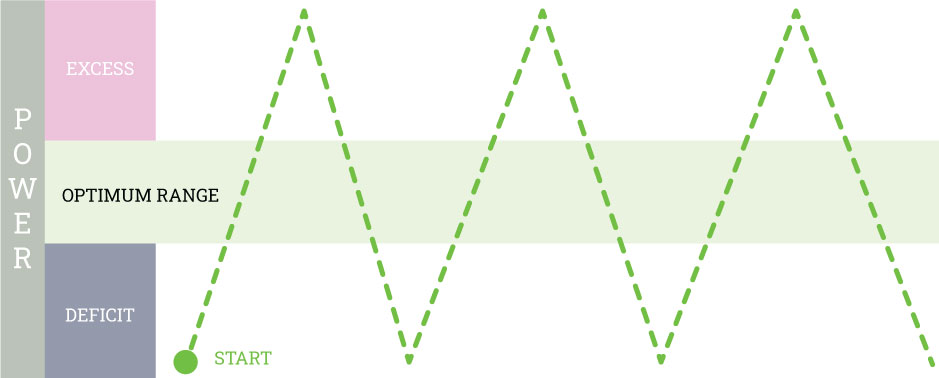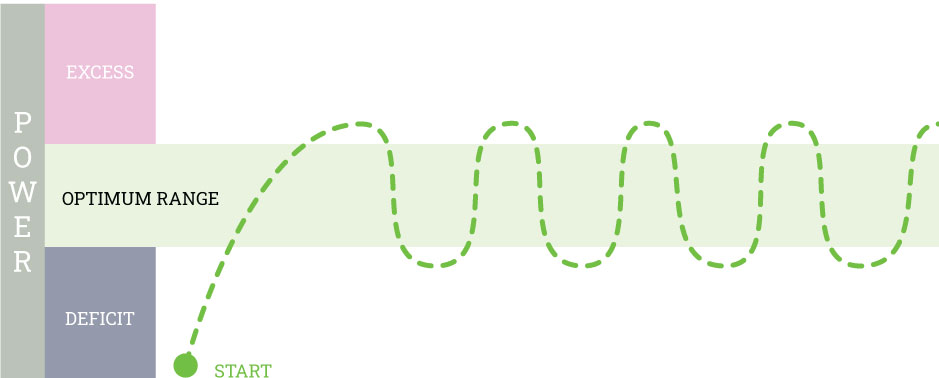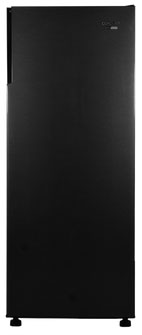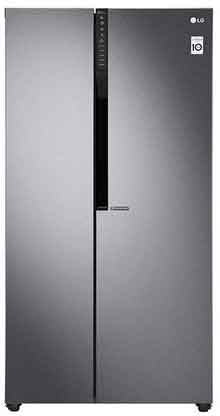As with any long-term buying decision, purchasing a refrigerator should require a high level of scrutiny. After all, a refrigerator will be part of your life for a decade or more.
There are a lot of questions to ask yourself when you’re buying a new refrigerator: What size should I get? What configuration? Should I get an inverter or a non-inverter?
With all of these factors, it may get confusing to choose the right model for your needs. This is why I have created this comprehensive yet concise refrigerator buying guide to help you find the best model for you!
Note: It may be helpful to read our Refrigerator 101 article first so that you’ll have some background knowledge on this topic.
- How much room do you have?
- Refrigerator sizing guide
- Manual Defrost vs. No Frost Refrigerator
- Look at the refrigerator’s energy guide label (EEF)
- Know how to calculate a refrigerator’s electricity cost
- Will you go for an Inverter or a non-inverter?
- Different types of refrigerators
- Other features to consider
- Conclusion
How much room do you have?
The size of your available kitchen space for the refrigerator will be the primary limiting factor in choosing a model. Even if you can afford a big model, if you do not have space for it, then you won’t be able to use it.
Measure the space
Measure the width, depth, and height of the spot where your refrigerator will be placed.
Make sure that the area is flat and level.


Account for ventilation
Give an allowance of 50mm (2 inches) of space at the sides and the rear, and 100mm (4 inches) at the top for ventilation.
Note: These measurements should serve as a rule of thumb. Different brands and models will have different requirements for ventilation; consult your operation manual when in doubt.
Not accounting for ventilation will trap the heat around your refrigerator, therefore it will have to work harder to keep the interior temperature down – hence increasing your electricity bill.
Also take note of the door hinge swing, especially if you have an island right in front of where your refrigerator will be located. It is also a good idea to measure the entryways to where your refrigerator will be located. Make sure that it can fit through the door!
Read our guide for refrigerator placement here.
Refrigerator sizing guide
As a rule of thumb, the bare minimum is 2.0 cubic feet (56 liters) of storage space per person in your household. Of course, this will depend on your habits and lifestyle. If you buy in bulk, you should have a bigger storage allocation per person.
[wpdatatable id=7]
Note: Refrigerators have two declared capacities: gross (total) and net (storage). Base your decision on the model’s net storage volume.
Also keep in mind that some fridge models have a bigger freezer volume than other models. So if you plan to store a larger amount of frozen goods or if your refrigerator will be used for your home business, you should look into that.
Manual Defrost vs. No Frost Refrigerator
Refrigerators can be categorized by the cooling system they use, namely: direct cooling (used interchangeably with manual defrost) and fan cooling (otherwise known as no-frost).
Direct Cooling (Manual Defrost)
This is the traditional cooling system. It relies on the evaporator to cool the air with no aid for circulation.With this system, you don’t have a way to evenly distribute the cold air inside the fridge. This uneven cooling is the reason why frost appears in the freezer box which you’ll have to defrost.
Direct cooling models are generally cheaper and cost less to operate. However, the drawback is you’ll have to defrost it periodically, and direct cool models are generally limited to smaller-capacity models.
Pros:
- Cheaper upfront
- Cheaper to operate
- Reliable
Cons:
- You have to defrost
- Limited to smaller models
Note: if you want to take a little bit of the hassle out of defrosting, there are semi-automatic defrost models available. Check them out!
Fan Cooling (No Frost)
In a fan cooling system (used interchangeably with no frost), the air is still cooled by the evaporator, but instead of natural convection, it will use electric fans to distribute the cold air inside of the compartments. This does a better job at evenly cooling food inside of the fridge compared to a direct cooling system.
Not only that, most have heating elements in the freezer that cycles on and off – this prevents frost from forming.
No frost models are available in a wider range of capacities compared to manual defrost models; they range from 6.4 cu.ft. (182L) up to 29.0 cu.ft. (823L) in storage capacity.
However, they are typically more expensive upfront compared to their manual defrost counterparts, and are also more expensive to run on account of the fans and the heating elements.
Pros:
- Convenient
- Even cooling
- Available in higher capacities
Cons:
- More expensive upfront
- More expensive to operate
Note: A lot of people seem to think that because it is named ‘no-frost’ it means that it cannot freeze things. Not true; frost is not the same as ice. A no frost model can make ice the same as any refrigerator.
I have written a comparison of direct cool vs. no frost models in a separate article. Go check it out!
Look at the refrigerator’s energy guide label (EEF)
Since a refrigerator will run for 24 hours a day and 7 days a week, it will have a big impact on your electricity bill. Hence energy efficiency is one of the most important factors that you should take into account when buying a new refrigerator.
The fastest and easiest way to tell if a model is energy efficient is by looking at how high its energy efficiency factor (EEF) is. The EEF is prominently displayed on the refrigerator’s energy guide label. The EEF tells you how efficiently a refrigerator uses its power to cool its compartments. A high EEF number means that that particular model is more energy efficient, and therefore has a lower operating cost.

With an EEF of 625, the refrigerator model with the highest EEF figure is Haier’s HRF-IVD450H. Go check it out!
Note: The energy label goes by many names. People refer to it as the EEF Label or just the Yellow Label.
Know how to calculate a refrigerator’s electricity cost
While knowing the refrigerator’s EEF is helpful, it won’t tell you how much it costs to operate the unit; it will only tell you which model is more efficient in relation to another model of the same category.
There are two ways to compute the monthly electricity cost of a refrigerator; First, we can use the kWh/24h figure already provided in the EEF label. For the other method we will use the Rated Power Input figure (in watts).
These two paths lead to two different answers; one is lower, the other is higher. Treat these two sides as a range of the possible costs you can incur each month depending on your usage habits.
Method #1 – using the kWh/24h value
Energy Consumption (kWh/24h) x Power Rate = Daily Electricity Cost
We will use this example model from the BPS:

The given energy consumption is 1.38kWh/24h; we will also use ₱9.00/kWh as the power rate.
[wpdatatable id=8]
This method produces the lower-end of your cost range. To get the higher-end, use method #2:
Method #2 – using the rated power input
Using the same example, the given rated power input is 140W, which is 0.14kW when converted. We need to multiply 0.14kW by 24 hours to get the kWh/24h figure we need for the calculation – that’s 3.36 kWh/24h.
(Rated Power Input/1000) x 24 Hours x Power Rate = Daily Electricity Cost
Here is the full computation:
[wpdatatable id=9]
This method produces the higher-end of your cost range. This means that depending on how you use your refrigerator or where you place it, this model will add somewhere between ₱372.6 – ₱907.2 on your electricity bill per month. I’ve written about the average power consumption of refrigerators in a separate article. Go check it out!
Will you go for an Inverter or a non-inverter?
If you are concerned about the high electricity cost of your refrigerator, you should look into inverter models. Simply put, an inverter is a device that controls the frequency of the incoming electrical current that goes to the refrigerator’s compressor; this allows the compressor to operate at variable speeds.


After reaching the desired temperature, an inverter a refrigerator does not completely shut off. Instead, it operates at a lower speed to maintain the set temperature.
There are a lot of benefits that inverters give you, but the foremost is that is saves energy and therefore saves you money in the long run. Also they are usually priced around ₱2,000 – ₱4,000 compared to non-inverter models of the same capacity.
How much does an inverter refrigerator save?
To give you a quick example, we’ve pitted two single door 6.7 cu.ft. refrigerator models Condura: CSD600MN (non-inverter) and CSD600SAi (inverter).
Non-inverter

| Gross Capacity | 6.7 cu.ft. / 189L |
| EEF | 339 |
| Energy Consumption | 0.55 kWh/24h |
| SRP | ₱13,400 |
Inverter

| Gross Capacity | 6.7 cu.ft. / 189L |
| EEF | 473 |
| Energy Consumption | 0.40 kWh/24h |
| SRP | ₱15,420 |
Using the same computation in the earlier section, we arrived with the following estimates:
[wpdatatable id=10]
Read our deeper dive on the inverter vs. non-inverter refrigerator comparison in this article.
Different types of refrigerators
There are several refrigerator configurations to choose from, each with their own strengths and weaknesses. Choose the one that makes the most sense to your space, budget, and needs.
Single Door

Available Capacity: 5.0 cu.ft. (140L) to 8.5 cu.ft. (240L)
This is the most popular type of refrigerator in the Philippines. No-frills, no bells and whistles, just a refrigerator that gets the job done. They are economical, reliable, and compact – perfect for smaller homes and families.
Double Door

Available Capacity: 6.0 cu.ft. (170L) to 21.0 cu.ft. (595L)
This type has a wide range of models available at different capacities and at different price points.
Top-mounted (that is, the freezer at the top) is the most common type of layout. However, bottom-mounted models are also available. They are more convenient as the fridge compartment is at waist-level, which reduces the need to bend down, as is the case with the top-mounted layout. Read here if you want to delve deeper in the top mount vs. bottom mount debate.
Larger capacities of this type of refrigerator have a wide door hinge swing, this may be inconvenient for narrow spaces or if there is an island right in front of your fridge. If this is the case for you, then the next type may be a better fit for you.
Side-by-Side

Available Capacity: 18.0 cu.ft. (510L) to 25.0 cu.ft. (710L)
With this style, the refrigerator is divided into two sides – one for the fridge compartment, and the other side is for the freezer compartment. Because of the architecture of this style, the ratio between these two compartments is near 50-50. Also, since the refrigerator is split down the middle, the door hinge swing is shorter, so it will be a better fit in tight spaces. The drawback is that the compartments are narrower, especially compared to the next type of fridge in this list.
When it comes to large capacity models such as these, the high-tech features abound. Some have water and ice dispensers, others have a see-through cabinet (see: LG Door-in-Door and Samsung Showcase). If you are on a slim budget but still want to be chic, there are some basic entry-level models that can be had for less than ₱50,000.
French Door

Available Capacity: 14.0 cu.ft. (395L) to 29.0 cu.ft. (820L)
Much like side-by-side models, the French door refrigerator is also divided in half. The difference is, instead of two halves, French door models are typically divided in quarters. Most French door models have four doors, but others have two at the top and a large drawer at the bottom, and some have five or six.
The refrigerator and freezer compartments are configured in a top and bottom style, instead of the left and right configuration of the side-by-side fridge. This in turn makes for a more spacious and wide fridge and freezer compartment.
French door models are typically the flagship model of a brand’s refrigerator line. Expect the latest features, technology, and – lest we forget – a much hefty price tag, to come with these models.
Other features to consider
Door material. Steel is the most popular, as it is tough and durable, and it fits most kitchen decors. Tempered glass doors are also rising in popularity, as they lend a touch of class and sophistication in your kitchen. They can’t hold any magnets though, and it is quite annoying to always wipe down fingerprint marks – but it is just so dang elegant!
Handle Style. There are two styles to choose from: bar type and recessed. The bar type is most common in direct cool models; nothing can be said more of this handle except that it gets the job done. Recessed handles look cleaner and slicker, as there are no protruding handles outside the fridge – you can’t hang a towel from it though, as most Filipino households are apt to do. This nuisance can be solved by placing a magnetic refrigerator towel bar on the door.
Deodorizers and Ionizers. In the old days, people used to put charcoals inside their fridge to remove bad odors. Presently, manufacturers already have built-in deodorizers inside the fridge so that you won’t have to do that anymore. Some brands also take it a step further by introducing ionizers that deactivate viruses and bacteria.
Vegetable Crisper. If you use a lot of vegetables in your cooking, you should look for models with a large vegetable crisper space (this is the pull-out tray at the bottom of most fridges). Some models even come with humidity control functions to preserve the quality of your greens longer.
Voltage Fluctuation Protection. As we are all painfully aware, our electricity providers can be unreliable sometimes. When the voltage fluctuates, the electronic parts of the refrigerator may be damaged. This is why some people also buy either a surge protector, a power-on delay, or an AVR (automatic voltage regulator) for their refrigerators – especially for the higher-end ones. Some brands have built-in voltage protection for their fridges, so you better be on the lookout for those; to be sure, ask an appliance sales personnel in the store.
Conclusion
Are you ready to buy a fridge now? I hope that this refrigerator buyers guide has served you well.
Now that you know what to look for in a refrigerator, you can now narrow down your choices to make the whole decision-making process easier.
References
Woodford, C. (2020, August 17). Inverters. Explain That Stuff. https://www.explainthatstuff.com/how-inverters-work.html

Miguel Mores worked for 5 years as a member of the product management team for a home appliance company in the Philippines. He started 101appliance to answer the most common customer questions that he has encountered during his time in the industry. He now works in the digital marketing field and manages a small online bookstore on the side.


What is the difference between Digital Inverter Compressor and DC Inverter Compressor? Which is best in terms of energy efficiency, cooling effect and durability?
Thankyou.
It basically all comes down to marketing terms. All inverters convert AC to DC,so “DC Inverter” is kind of redundant.
As for the term “Digital Inverter”, inverters back then were mechanical machines. Of course these are too big to put into refrigerators, so manufacturers had to find a way to fit inverters inside the compressors. Hence they came up with electronic parts (aka DIGITAL) that will be used instead of the mechanical inverters.
As for the energy efficiency and durability, the answer to this varies. It depends on the brand and the model. I suggest you list down your prospective models and compute the EEF and energy cost on your own. Kindly refer to this article: https://101appliance.com/understanding-the-energy-label/
Hope that helps!